This pub was built in 1899 to serve the new Market Place Railway Station. The railway line ran through the estate of the Duke of Portland, after whom the hotel was named.
The text reads: Surveyed and planned by James Brindley, and opened on the 4 June 1777.
Right: James Brindley
Above: The lock keepers house at Wharf Lane in the 1890s
Below: Chesterfield Canal at Killamarsh before the Norwood Tunnel collapsed in 1907.
Photographs and text about Gordon Banks.
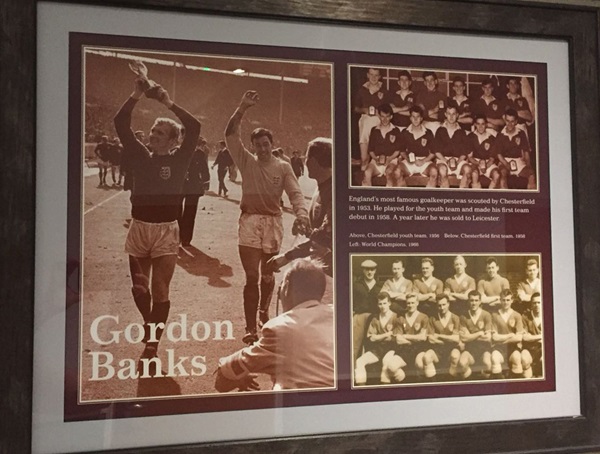
The text reads: England’s most famous goalkeeper was scouted by Chesterfield in 1953. He played for the youth team and made his first team debut in 1958. A year later he was sold to Leicester.
Above: Chesterfield youth team, 1956 Below: Chesterfield first team 1858
Left: World Champions, 1966.
Photographs and text about Queen’s Park.
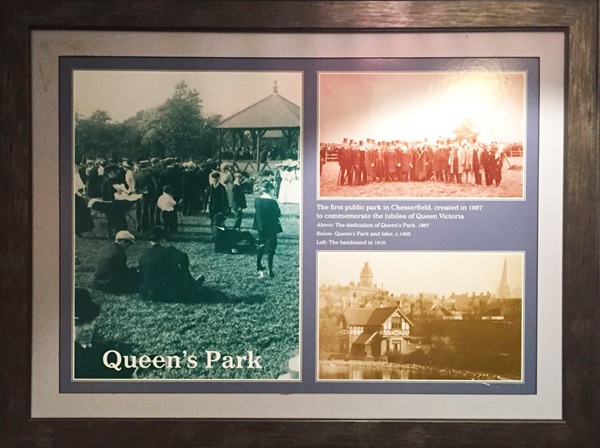
The text reads: The first public park in Chesterfield, created in 1887 to commemorate the jubilee of Queen Victoria.
Above: The dedication of Queen’s Park, 1887
Below: Queen’s Park and lake, c1905
Left: The bandstand in 1910.
Photographs and text about Barbara Castle.
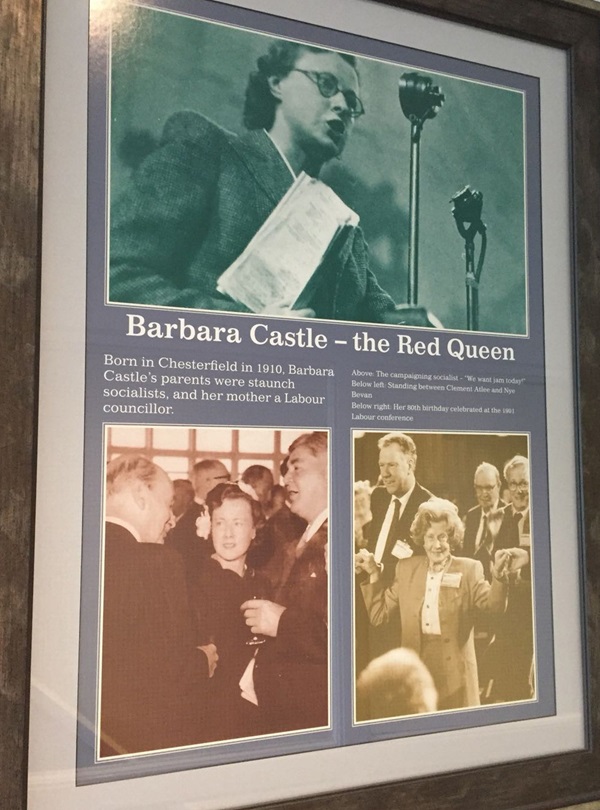
The text reads: Born in Chesterfield in 1910, Barbara Castle’s parents were staunch socialists, and her mother a Labour councillor.
Above: The campaigning socialist – “we want jam today”
Below left: Standing between Clement Atlee and Nye Bevan
Below right: Her 80th birthday celebrated at the 1991 Labour Conference.
Illustrations, a photograph and text about Revolution House.

The text reads: The inn where the bloodless revolution of 1688, to replace James II with William and Mary, was plotted.
Above: The Cock and Pynot, Old Whittington (now Revolution House)
Left: The Earls of Devonshire and Danby, and John D’Arcy, plotting the ‘Glorious Revolution’
Below: Revolution House, 1904.
Photographs and text about Violet Markham.
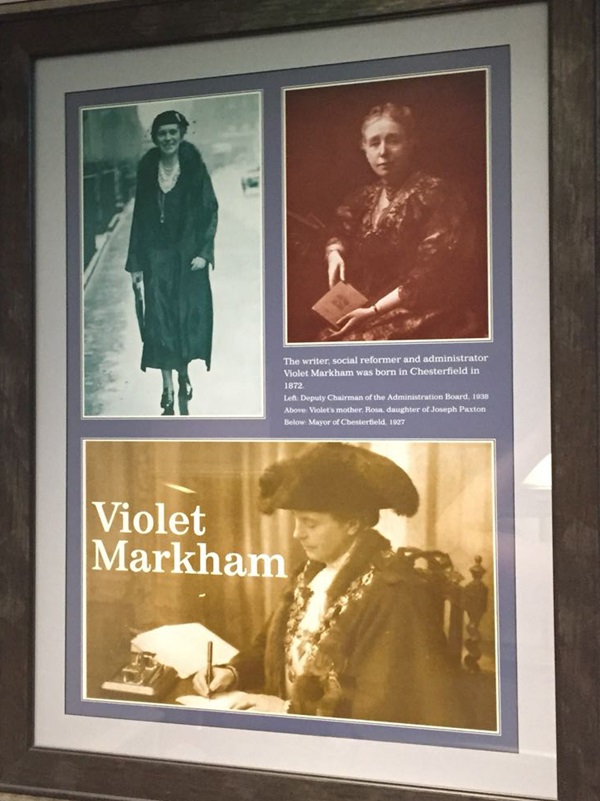
The text reads: The writer, social reformer and administrator Violet Markham was born in Chesterfield in 1872.
Left: Deputy chairman of the Administration Board, 1938
Above: Violet’s mother, Rosa. Daughter of Joseph Paxton
Below: Mayor of Chesterfield, 1927.
Photographs and text about the Crooked Spire.
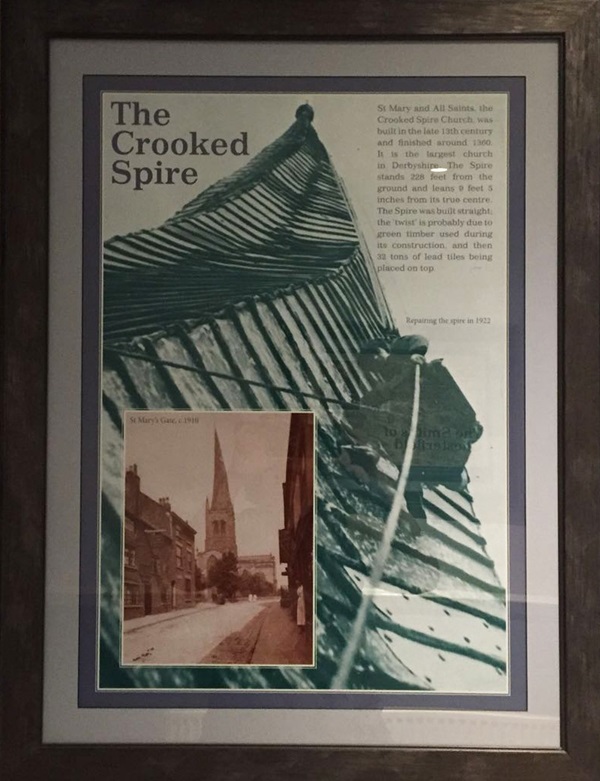
The text reads: St Mary and All Saints, the Crooked Spire Church, was built in the late 13th century and finished around 1360.
It is the largest church in Derbyshire. The spire stands 228 feet from the ground and leans 9 feet 5 inches from its true centre. The spire was built straight; the ‘twist’ is probably due to green timber used during its construction, and then 32 tons of lead tiles being placed on top.
Photographs and text about the use of horses for transportation.

The text reads: Horses remained an essential co-worker with man until well into the 20th century.
Above: The Ashover Carrier, c1900
Below: Snap, the pit pony at Ireland Colliery, 1924
Right: A horse-drawn tram on Chatsworth Road, 1900.
Prints and text about the Smiths of Chesterfield.
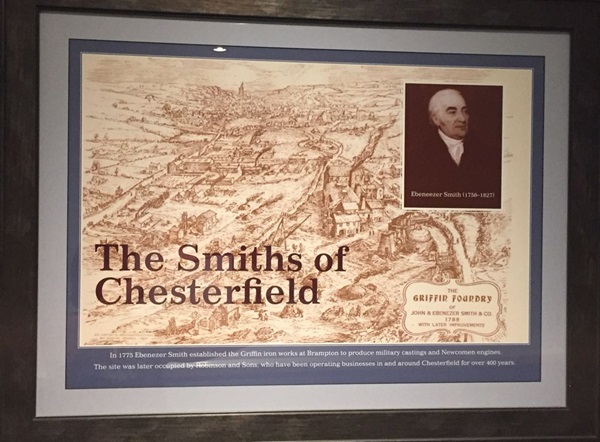
The texts reads: In 1775 Ebenezer Smith established the Griffin iron works at Brampton to produce military casting and Newcomen engines. The site was later occupied by Robinson and Sons, who have been operating businesses in and around Chesterfield for over 400 years.
An old flyer for The Portland Hotel.
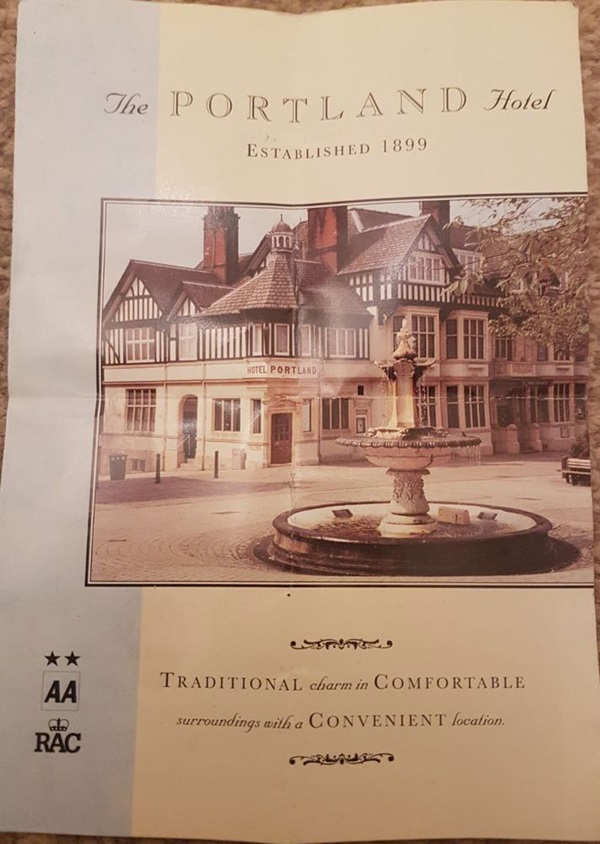
External photograph of the building – main entrance.
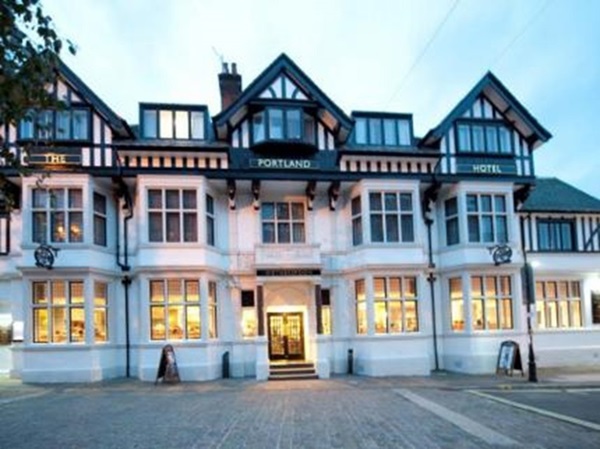
If you have information on the history of this pub, then we’d like you to share it with us. Please e-mail all information to: pubhistories@jdwetherspoon.co.uk